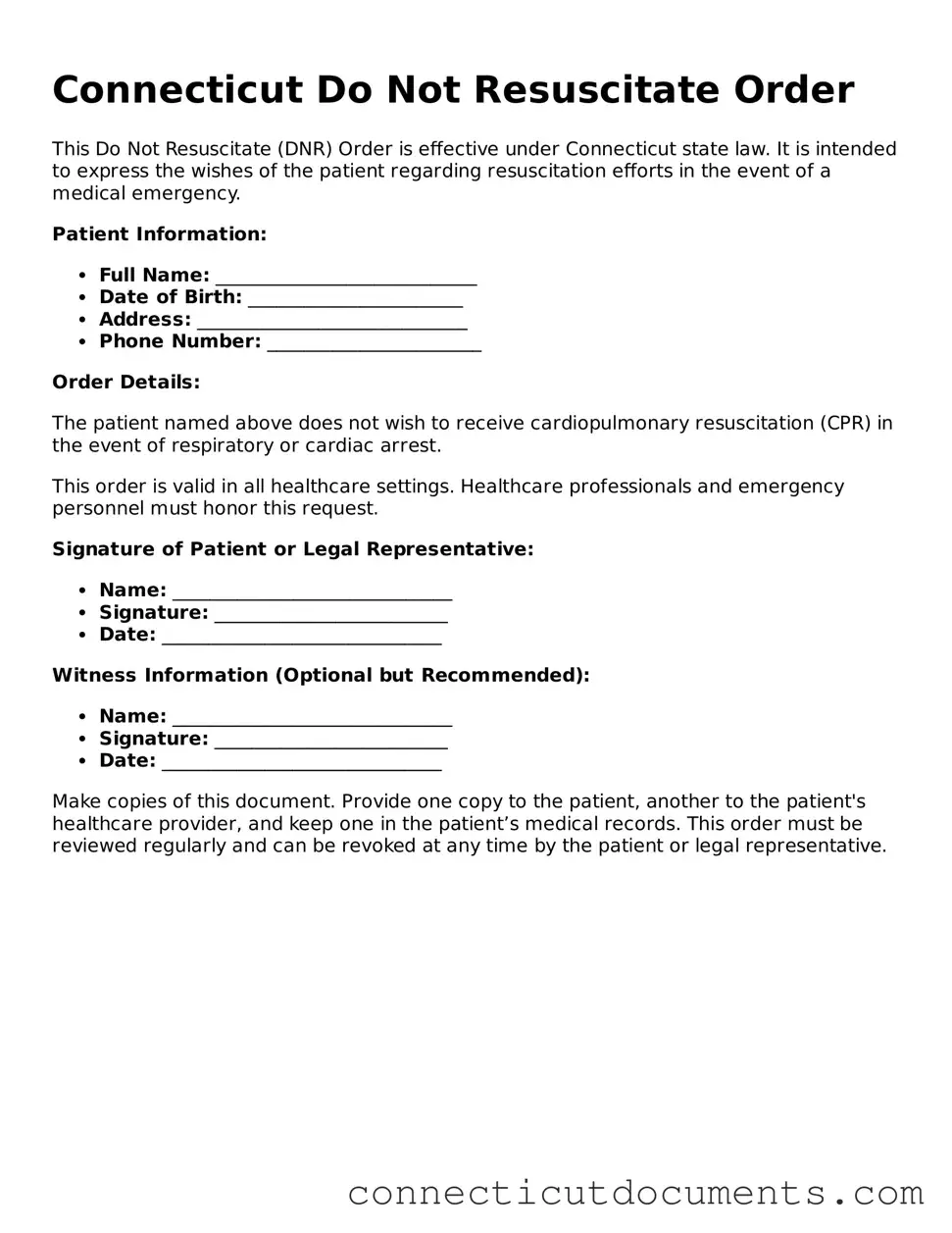What is a Do Not Resuscitate (DNR) Order in Connecticut?
A Do Not Resuscitate Order is a legal document that allows a person to refuse resuscitation efforts in the event of a cardiac arrest or respiratory failure. In Connecticut, this order must be signed by a physician and indicates that the individual does not wish to receive CPR or other life-saving measures if their heart stops beating or they stop breathing. It is important for individuals to discuss their wishes with their healthcare providers and loved ones before completing this document.
Who can request a DNR Order in Connecticut?
Any adult who is capable of making their own medical decisions can request a DNR Order. This includes individuals with terminal illnesses, those experiencing severe health conditions, or anyone who wishes to have control over their end-of-life care. Additionally, a legally appointed guardian or healthcare proxy can also request a DNR Order on behalf of an individual who is unable to make decisions for themselves.
How is a DNR Order created in Connecticut?
To create a DNR Order in Connecticut, an individual must first discuss their wishes with their physician. The physician will assess the individual's medical condition and determine if a DNR Order is appropriate. If agreed upon, the physician will complete the DNR Order form, which must be signed by both the physician and the individual (or their authorized representative). It is essential to keep copies of the signed order in accessible locations, such as with healthcare providers and family members.
Can a DNR Order be revoked?
Yes, a DNR Order can be revoked at any time by the individual who created it. To revoke the order, the individual should inform their healthcare provider and family members of their decision. It is advisable to complete a new DNR Order form if changes to the individual's wishes occur. Clear communication is key to ensuring that everyone involved is aware of the updated preferences.
What happens if a DNR Order is not followed?
If a DNR Order is not followed, it may lead to unwanted resuscitation efforts, which can cause distress for the individual and their loved ones. In Connecticut, healthcare providers are legally obligated to honor a valid DNR Order. If a DNR Order is in place, medical personnel should respect the individual's wishes and refrain from performing CPR or other resuscitation measures. If there are concerns about the enforcement of a DNR Order, it is important to discuss these with the healthcare team.
Where should I keep my DNR Order?
It is crucial to keep your DNR Order in a place that is easily accessible to both you and your healthcare providers. Many individuals choose to carry a copy in their wallet or purse. Additionally, providing copies to family members, caregivers, and your primary healthcare provider can ensure that your wishes are known and respected in case of a medical emergency. Some people also display a DNR bracelet or necklace to indicate their preferences clearly.
